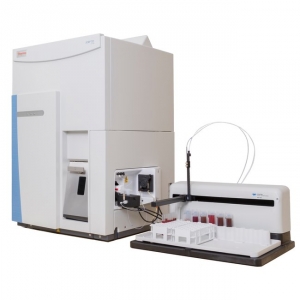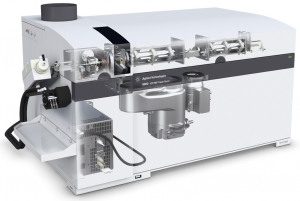September 21, 2018 -- Among the most sensitive atomic spectrometry techniques is ICP-MS. In 2012, the technology took a significant step forward when Agilent launched the first triple quadrupole ICP-MS. A triple quadrupole instrument differs from an instrument with a single quadrupole analyzer in that it is a tandem system, with two quadrupole mass analyzers, with a third quadrupole positioned in between to act as a collision cell. Basically, the quadrupoles act as filters so at the end of the process, users only have the element of interest reaching the detector. The main difference between single quadrupole and triple quadrupole ICP-MS is that the latter enables more specific analyses in complex matrices by improved interference removal.

A great example of a complex (and delicious!) matrix is food. Pure food is already a very complicated mixture of many different kinds of molecules, not to mention the potential contaminations, adulterations, and toxic elements that one hopes to measure in this too-complex matrix. The Food and Agriculture Organization, the World Health Organization, and government agencies are making an important effort to standardize food testing practices around the world. With the world population growing at a significant rate, food production has become a massive global issue, and that means we need to be more careful to prevent contaminated food from getting onto people’s plates. Several countries like China and the US have revised their food regulations in the last couple of years, creating strict guidelines in food facilities, the supply chain, food importation, and for farming activities.

The different actors in the food chain, as well as government control agencies, rely on new and innovative technologies to comply with regulations. Depending on what analysis (microbiology, allergen, chemistry, etc.) is needed, specific technologies such as spectrometers, refractometers, titrators, moisture analyzers, etc., may be utilized. ICP-MS systems, particularly triple quadrupole, can measure nutritional, toxic, and essential elements in food samples. This robust and multielemental method can be utilized even with trace concentrations of elements in food. Triple quadrupole utilizes the first quadrupole to filter ions, the second as a reaction chemistry interference removal, and the last one to mass-select the sample, further purifying the target for the greatest selectivity.

Of course, this performance comes at a cost. Most of the demand for triple quadrupole ICP-MS for food safety comes from the US and Europe: fully developed, wealthy regions (and laboratories). However, as more competitors come into play, it is expected that prices will lower, accommodating a broader demand. There are currently three systems on the market, the 8800 and 8900 triple quadrupoles from Agilent and the iCAP TQ ICP-MS from Thermo Fisher. Both companies and their prospective competitors are working towards reducing manual sample preparation time and method development time as this contributes to standardization, which saves time and increases productivity.
Copyright © 2018 scienceboard.net



